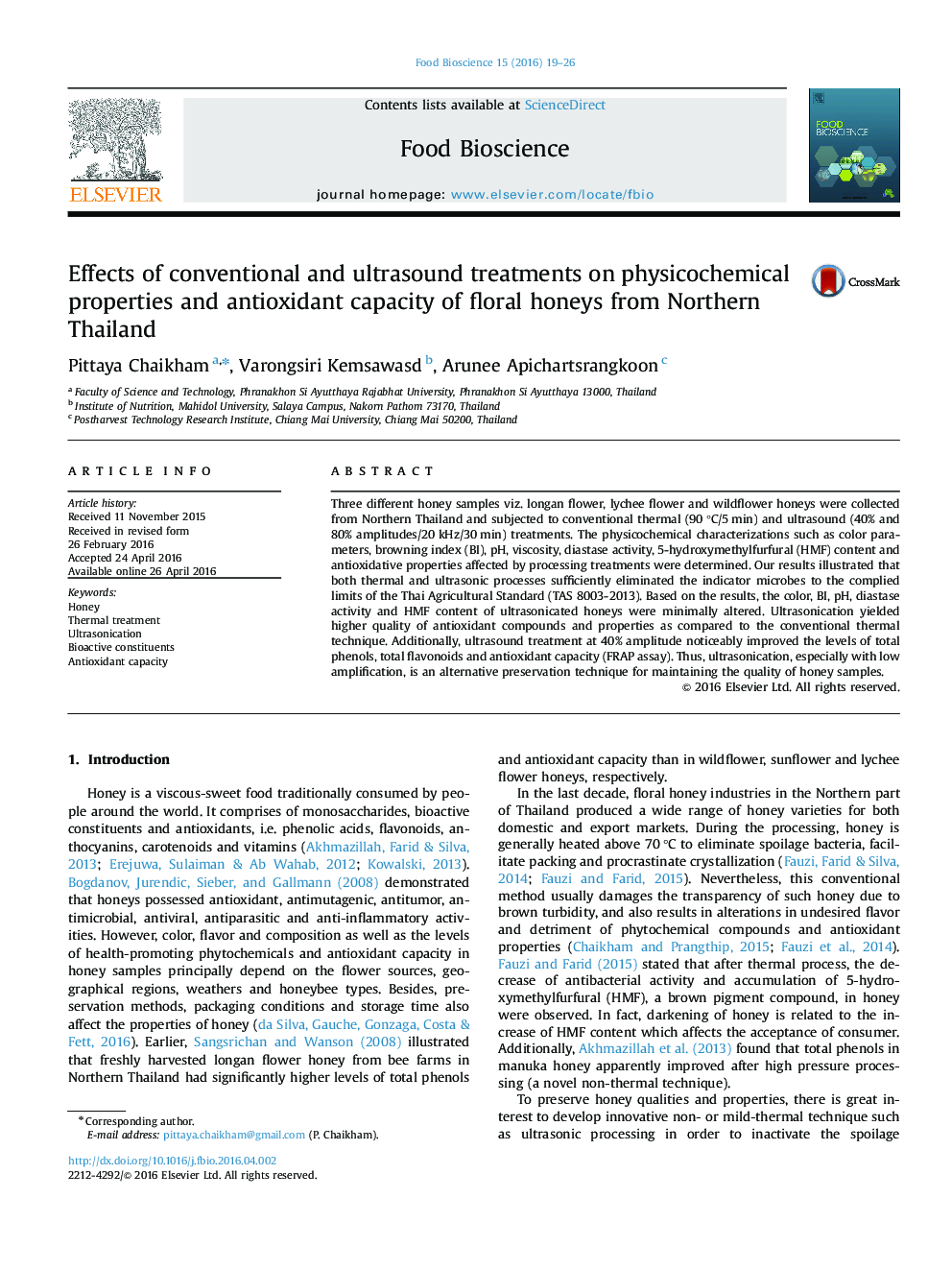| Article ID | Journal | Published Year | Pages | File Type |
|---|---|---|---|---|
| 19645 | Food Bioscience | 2016 | 8 Pages |
Three different honey samples viz. longan flower, lychee flower and wildflower honeys were collected from Northern Thailand and subjected to conventional thermal (90 °C/5 min) and ultrasound (40% and 80% amplitudes/20 kHz/30 min) treatments. The physicochemical characterizations such as color parameters, browning index (BI), pH, viscosity, diastase activity, 5-hydroxymethylfurfural (HMF) content and antioxidative properties affected by processing treatments were determined. Our results illustrated that both thermal and ultrasonic processes sufficiently eliminated the indicator microbes to the complied limits of the Thai Agricultural Standard (TAS 8003-2013). Based on the results, the color, BI, pH, diastase activity and HMF content of ultrasonicated honeys were minimally altered. Ultrasonication yielded higher quality of antioxidant compounds and properties as compared to the conventional thermal technique. Additionally, ultrasound treatment at 40% amplitude noticeably improved the levels of total phenols, total flavonoids and antioxidant capacity (FRAP assay). Thus, ultrasonication, especially with low amplification, is an alternative preservation technique for maintaining the quality of honey samples.
